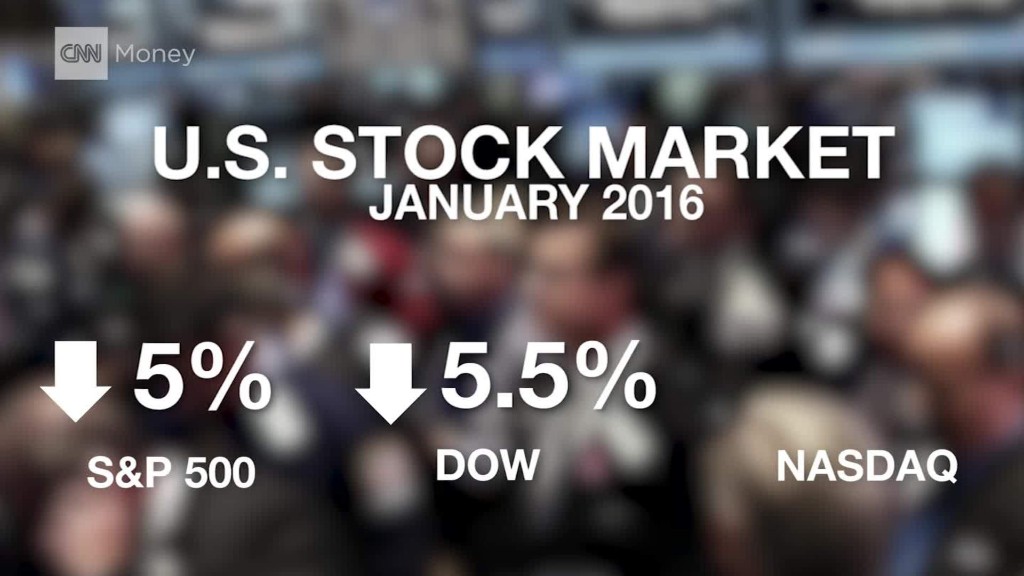
It wasn't just you. Virtually all investors lost money during the atrocious month of January.
Over 93% of investors were in the red last month, according to data shared exclusively with CNNMoney by Openfolio, an app that allows people to see how their investment portfolios stack up with others.
Deep fears about the crash in oil prices and turbulence in China took hold of the stock market in January. The Dow lost 5.5% of its value, the index's deepest monthly drop since the market freakout in August.
But the typical investor fared even worse, losing 6.3% of his or her portfolio in January, according to Openfolio.
"A miserable start to the year" is how Bespoke Investment Group summed it up to clients on Monday. "Thankfully for investors, January 2016 is now in the history books," the firm wrote.
Some investors did manage to elude the carnage in the stock market -- by going to cash. Openfolio said those who made money in January held an average of 19% in cash, compared with 9% for those who lost money.
Related: Fear took over the stock market in January
It's the latest sign that global economy worries are pushing investors away from risky assets like stocks.
Investors yanked $2.9 billion from U.S. stocks last week, marking the seventh week of outflows out of the past eight, according to Bank of America Merrill Lynch. Emerging markets, which have been in turmoil for months, experienced a 13th straight week of outflows of $1.2 billion.
Money is fleeing to safe haven government bonds. For instance, municipal bonds have enjoyed 19 straight weeks of inflows, BofA said.
GoPro (GPRO) is probably the opposite of a safe haven. The extremely volatile yet popular stock plunged 36% in January, making it the month's biggest wealth destroyer, according to Openfolio. Other popular stocks that seriously dented portfolios in January include Twitter (TWTR) (-27%), Tesla (TSLA) (-20%) and Bank of America (BAC) (-16%).
Related: Why it stinks that Verizon is the top Dow stock
Despite the gloomy start to 2016, there is a silver lining for investors. First, the average investor's loss of 6.3% in January actually beat the Nasdaq, which fell nearly 8% amid its worst month since 2010.
More importantly, the stock market showed some real signs of life over January's final week and a half. The Dow skyrocketed 1,015 points between the lowest point on January 20 and last Friday's close.
"A late month rally helped avert complete disaster," Bespoke wrote.
The better mood on Wall Street was driven by a sharp rally in closely-watched oil prices, an ability to decouple from China's wild stock market and more stimulus from global central bankers, especially the Bank of Japan.
Investors can also take some solace from history. Most people know January tends to be a good barometer for the whole year in the stock market. Indeed, when the S&P 500 falls by 4.6% or more in January, the market declined an average of 6.1% for the full year, according to S&P Capital IQ.
However, what most people don't realize is that a bad January doesn't doom the rest of the year. In fact, the research group said the remaining 11 months of the year enjoyed a price increase more than half the time the S&P 500 falls by that much in January.
Related: El-Erian: Time to put 30% of your assets in cash
Count David Kelly, chief global strategist at JPMorgan Funds, among those who sees the glass half full despite the January gloom.
Kelly thinks that even though the global economy is "soft" today, it'll improve later in 2016, boosting corporate profits. That's why he's advising clients not to dump stocks.
"Super low interest rates and recently lower equity valuations around the world make the quiet, logical argument for an overweight to equities," he wrote in a client note.


